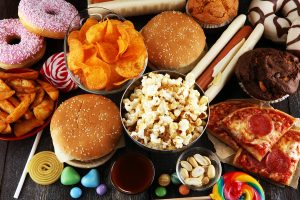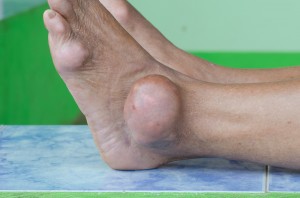There is an article in a CNN report talking about the foods that are killing us. This review is based on an article in the Lancet. The Lancet study was based on a global review of eating habits in 195 countries. The question in the study was which of 15 food items caused the diseases that killed people. The answer was surprising. There are either omissions or unhealthy components of foods that kill us. Here is a list of 12 food groups that are problematical.
A dozen foods that were found to be problematical in the global review
- Diet high in sodium (4 grams per day, which is 86% above the optimal level)
- Low intake of whole grains (only 23% of optimal levels)
- Low fruit intake
- Diet high in trans fatty acids
- Low omega-3 fatty acid diet (due to low intake of sea food)
- Diet low in calcium
- Diet low in fiber
- High intake of sugar beverages or sugary foods (49 grams of sugar per day)
- Processed meat intake too high (4 grams per day, 90% more than optimal)
- Red meat consumption too high (27 grams per day, 18% higher than optimal)
- Nut and seed intake too low (only consuming 12% of desired amount)
- Diet low in milk (16% of desired amount)
Each of these components or several of them in combination create deficiencies in us or overburden us to the point where we can get sick and disabled.
Different countries have different eating habits
Globally there were 11 million deaths found in 2017 and 255 million years of disability because of various dietary inadequacies.
Here is the lineup of the leading causes of death:
- cardiovascular disease with 10 million deaths and 207 million years of disability.
- Cancers caused 913,090 deaths and 20 million years of disability.
- Type 2 diabetes caused 338,714 deaths and 24 million years of disability.
This was broken down into statistics for each of the contributory countries. Here I am only citing some pertinent data that shows the importance of balanced meals for a healthy life expectancy.
Different death rates in various countries
There were big differences in terms of cardiovascular disease deaths according to various regions. Central Asia had the highest death rate with 613 deaths per 100,000 people per year. In contrast the high-income Asia Pacific group had only a cardiovascular death rate of 68 per 100,000 people per year.
Cancer deaths were highest in East Asia with 41 deaths per 100,000 people. The lowest cancer rate was found in North Africa and the Middle East with 9 deaths per 100,000 people.
Among the 20 most populous countries Egypt had the highest diet-related deaths, namely 552 deaths per 100,000 people. On the other hand Japan had the lowest of all diet related deaths with 97 deaths per 100,000 people.
Some highlights how unhealthy foods kill us
Globally people only eat 12% of the desirable amount of nuts and seeds. They only drink 13% of what they should consume in terms of milk. People worldwide eat 23% of the desirable amount of whole grains.
Nuts and seeds contain mono- and polyunsaturated fats and omega-3 fatty acids, which lower your risk of getting heart attacks and strokes.
Milk is a good source of calcium, protein, minerals and vitamins. However, milk, yogurt or cheese should be consumed as low fat varieties. Alternatively people who do not consume milk should look for protein carriers such as soy milk or pea milk.
If you eat nuts and vegetables you can largely compensate for low milk consumption. If you don’t get enough whole grains, you are missing a whole lot of nutrients. This makes you more vulnerable of getting cardiovascular disease, hypertension, type 2 diabetes, colon cancer, and obesity.
Other unhealthy foods can kill us
The WHO has labelled red meat and processed meat as being carcinogenic
Studies clearly showed a higher than normal rate of colorectal cancer in those who consumed larger amounts of red meat and/or sausages.
Sugar overconsumption
Sugar overconsumption leads to a variety of conditions. Weight gain with the development of obesity and type 2 diabetes are common when you eat too much sugar. But even cancer like colorectal cancer and pancreatic cancer is more common in people who overindulge in sugar or sugary drinks. Sugar consumption raises your triglyceride and LDL level. This will eventually lead to hardening of the arteries, heart attacks and strokes.
Gout develops with purine containing foods
Gout can be caused by consuming a lot of red meat combined with copious amounts of beer. This is how royalty in the Middle Ages suffered from gout attacks. Gout had the nickname of “Disease of the affluent.” Both beer and red meat contain a lot of purines, which the kidneys cannot handle. The uric acid crystals that precipitate around joints cause excruciating pains.
What the global health study showed
Researchers of the global health study stated that improving the diet habits could potentially eliminate 1 in 5 deaths globally. Dietary risks for major diseases like heart attacks, strokes and cancer are independent from sex, age and socioeconomic status.
Three dietary factors stood out: too much salt, too little fruit and too little whole grain. These three items were responsible for 50% of diet-related deaths and 66% of “disability-adjusted life years”. The authors used this expression to describe how years of disability had their root in diet deficits (e.g. too little fruit) or overdoses of unhealthy food components (e.g. salt).
The leading dietary risk factors are too much salt, low whole grain, low fruit consumption, low vegetable intake and low omega-3 fatty acid consumption. On top of that come the previously established risks due to sugar overconsumption, excessive fat intake and consumption of red meat and processed meat.
Discussion of the meaning of these results
Deaths from heart attacks and strokes
We know for some time that high sugar and high starchy food intake cause elevated triglycerides and elevated LDL cholesterol. This leads to hardening of the arteries and eventually to strokes and heart attacks.
High sodium intake
Sodium intake of more than 2300 mg per day is considered high and can cause high blood pressure. heart attacks, strokes and aneurysms.
Eating not enough fruit
If you eat too little fruit, your system does not get enough vitamin C and other vitamins. Heart disease, cancer and anemia could develop from that.
Eating not enough vegetables
People who do not eat enough vegetables do not have enough antioxidants that protect them from free radicals. Free radicals are unstable chemicals that attack cells and DNA. Mutated cells can cause cancer. If you eat too little vegetables, you are at a higher risk of getting cancer. But there is another aspect of vegetables: phytonutrients protect from hardening of the arteries and blockages of heart and brain vessels. When someone does not eat enough vegetables, the risk for heart attacks and strokes is higher. Eating vegetables also protects you from diabetes and keeps the blood sugar more stable.
Not eating enough whole grain
Whole grain was identified as missing in a lot of people’s diet. When you incorporate whole grains into your food, you reduce the risk of cardiovascular disease, hypertension, type 2 diabetes, colon cancer, and obesity.
There are vitamins, minerals, dietary fiber and lignans in whole grain. Other nutrients are beta-glucan, several phytochemicals, phytosterols, phytin, and sphingolipids. All of these are necessary to maintain good health.
Low omega-3 fatty acid consumption
Omega-3 fatty acids are important for healthy skin, brain development (neurodevelopment of children) and prevention of heart attacks. Omega-3 fatty acids reduce the risk of cancer because of their anti-inflammatory action and inhibition of cell growth factors. In one study rectal cancer showed a 21% reduction comparing the highest omega-3 fatty acid intake to the lowest intake of omega-3 fatty acids. Colon cancer showed no effect to omega-3 consumption, but breast cancer showed a reduction with omega-3 fatty acid supplementation. Researchers showed that omega-3 fatty acid supplementation can slow down dementia and Alzheimer’s disease. Protein deposits called amyloids were found less in the brain of patients with omega-3 fatty acid supplementation; in addition the brain volume was preserved more with the omega-3 supplement. Low omega-3 fatty acid consumption also has a detrimental effect on macular degeneration of the eyes and on joint pains of rheumatoid arthritis patients.
Conclusion
I have reviewed a global health study that described various risks that led to deaths from different diseases. It was noticeable that death and disability rates varied significantly according to different countries. The authors also looked into food habits and could pinpoint certain food deficiencies that caused diseases that prematurely disabled or killed people. I have described the various one-sided food habits that led to specific diseases.
What we should all learn from this complicated study is that we all can strive to eat more balanced meals. You want to eat a low sodium diet, eat enough fruit and vegetables, to which you add some nuts. Eat enough whole grains and add omega-3 fatty acids. This way the risk of getting cancer, cardiovascular diseases or other problems can be significantly reduced.







